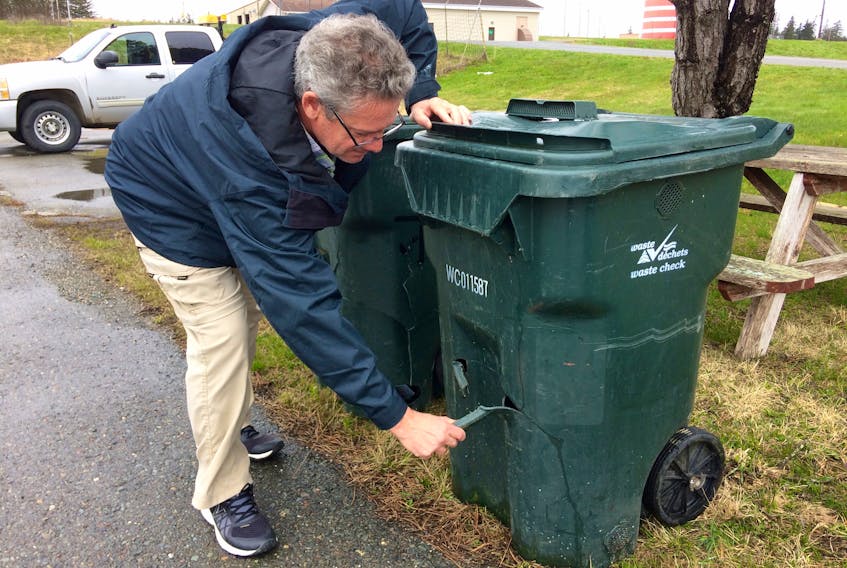There are a lot of green carts out there and many of them are old – in need of repair or replacement – creating a bit of a challenge for Waste Check.
Gus Green, Waste Check’s general manager, estimates there are 15,000 to 16,000 carts in use in Yarmouth and Digby counties, the area Waste Check covers, and these are just the residential ones.
“The vast majority of our carts are now more than 20 years old,” Green said, adding that they came with a 10-year warrantee. “So they’re getting quite old and, like anything else, over time, things break down.”
Green says they may have to look at adding a part-time position to assist them with the carts.
“We’ve been trying to incorporate cart delivery in sort of our normal, day-to-day routine,” he said, “so (for example) if I’m going to Digby for a meeting, I take carts and deliver them in Digby ... but it’s getting to a point now where we can’t keep up, doing it that way.”
Waste Check buys carts on an ongoing basis, about 800 to 1,000 of them being a typical annual purchase, he said.
Carts are provided to residents free of charge. Repairs or replacements also are free. Residents who need a cart fixed or replaced can contact Waste Check.
Carts can de damaged in different ways.
“Probably the most common one is damage around the area where the cart is lifted by the collection vehicle, and that can be caused by too much weight in the cart or just the age of the cart,” Green said, “or it’s possible sometimes that they’re damaged by the haulers themselves.”
Another thing that can sometimes happen to carts, he said, is the wheels breaking off them, which again can be caused by too much weight in the cart or the cart being brought down too fast after its contents are emptied.
The spring is typically a busy time of year where carts are concerned, Green said, as people are cleaning up their yards. If they weren’t diligent about using their cart during the winter, he said, this tends to change come springtime. It’s also around now that Waste Check will see carts damaged by snowplows (not necessarily the fault of the snowplow driver, Green said).
Carts can be damaged under a “whole lot of scenarios,” he said.
Meanwhile, just as people can call Waste Check if they want a cart repaired or replaced, they also will be given a different size if that’s what they prefer. When the green cart program began, only the bigger size was offered.
“It wasn’t until later in the program that the (Waste Check) board decided to start offering a smaller-sized cart,” Green said.
“Now we find it’s about 50-50. Typically, when we’re ordering carts, we order half of the larger and half of the smaller. Some people, if they’re avid gardeners, like to have the big cart, or if they have big families, they like to have the big cart. Senior citizens often prefer to have the smaller carts. They find it easier to get them back and forth to the curb.”









